Just imagine an Indian spy satellite intercepting enemy signal that indicates imminent land, sea, air and cyber-attacks on critical defence positions and installations. The Chief of Defence Staff (CDS) holds an emergency four-way conference with ground, sea, and air commanders thousands of kilometres apart through a satellite phone. Low-orbiting surveillance satellites locate the enemy battle formations, radar installations, and missile pads. The army formations, combat aircraft, and nuclear submarines get into action using navigation and communication satellites. This was one of the scenarios played out in India’s first simulated space warfare exercise, IndSpaceEx, conducted recently by the Indian armed forces. The exercise provided all stakeholders a deep understanding of the emerging space security challenges to review the existing resources and plan appropriate defence capabilities and assets in space.
Today, the military planning and execution is very much dependent on space based systems. Every aspect of warfare, from strategic targeting of intercontinental ballistic missiles to covert operations by special forces, has an essential space link. Satellites are being extensively used for communication, missile warning, weather information, imagery and intelligence, surveillance and reconnaissance, and services such as providing information related to position, navigation, and timing.
The satellites are the eyes, ears and voice of the modern military commanders. Realising that future wars will be controlled from space using electromagnetic spectrum, nations are vying to gain an edge in space. Space has become the definitive ‘high ground’ where tomorrow’s wars may be won or lost and countries are moving towards the application of military force in, from, and through space.
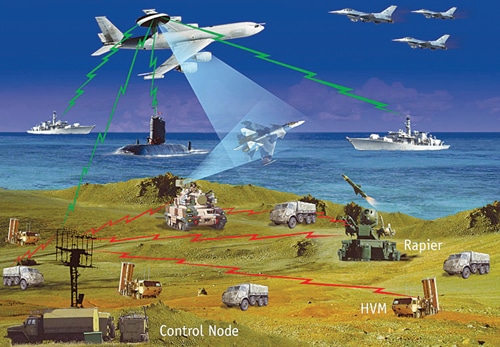
In India, all space situational awareness related tasks extending to tactical, predictive, and intelligence have been placed under The Space Situational Awareness Directorate using an integrated battle management command, control, and communications (BMC3) architecture. ISRO and DRDO, in cooperation with public and private sectors, have been entrusted with the task of developing the requisite technology and assets to address the technical demands and necessities of the armed forces.
The line between militarisation and weaponisation is quite blurred. Militarisation broadly encompasses any activity to build up to a state of conflict, whereas weaponisation, by contrast, means actively developing or deploying a weapon. The militarisation of space assists armies on the conventional battlefield, whereas weaponisation of space enables the outer space itself to become the battleground, which is sometimes referred to as the Fourth Frontier of War.
Space has been militarised since the second half of 20th century. In the past, India had been studying space for acquisition of knowledge and for other peaceful purposes, and there was no intension to weaponise space. However, recent advances by our bordering countries for acquiring offensive and destructive space assets have compelled India to develop space warfare assets. Yet, India remains firm on its stance of using the domain of space only for peaceful purposes and does not support any form of weaponisation of outer space. Initially, the objective of placing military assets in space was primarily to enable the terrestrial forces to operate more efficiently and effectively.
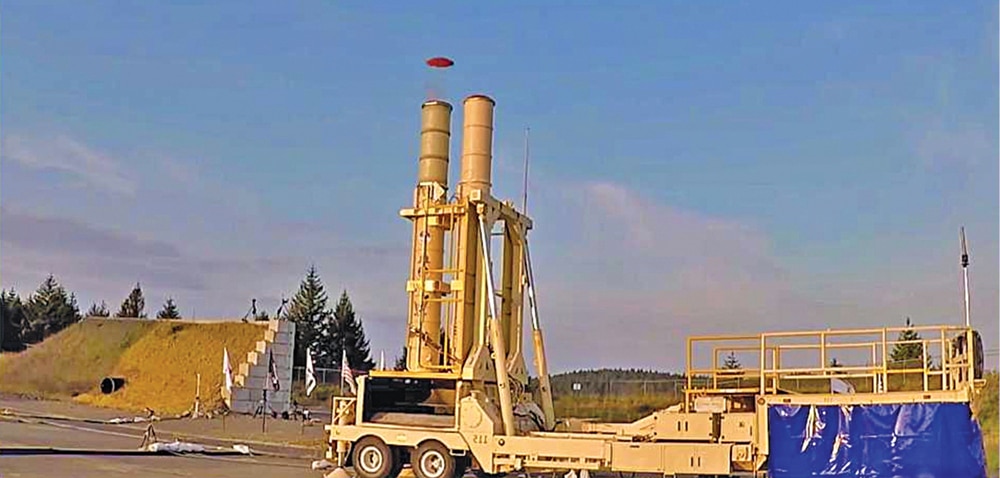
The United States had been at the forefront of exploiting space for enhancing military capability, followed by Russia and China. In 2020, the United States established the U.S. Space Force as an independent dedicated military service.
Capacity-building
India is progressively becoming self-reliant and capable of maintaining deterrence in space and providing support to the armed forces on land, sea, and air. With increasing reliance on space based systems, these very same space based assets have become potential targets. Hence it is necessary to protect them to discourage the adversary. Most of the counter space technologies, such as surveillance, signal jamming, and spoofing of signals, are covert, including anti-satellite (ASAT) technologies.
From the military standpoint, the Indian defence forces need an integrated battle management command, control, and communications (BMC3) architecture for tracking and identifying anti-satellite weapons, providing communication jammers and sensors to overpower spacecrafts. To provide effective BMC3 a variety of dedicated sensors are needed for rapid tasking, processing, exploiting, and disseminating information across various levels of the chain of command.
Unlike the major space powers—the USA, Russia, and China—whose space programmes have military origins, India’s space programme started as a civil project for peaceful purposes. As a result, the country developed limited capacity and experience in the military dimension of space domain. Today, India is facing the challenge of creating space assets such as co-orbital weapon systems and offensive cyber capabilities as a credible minimum deterrence against any threat.
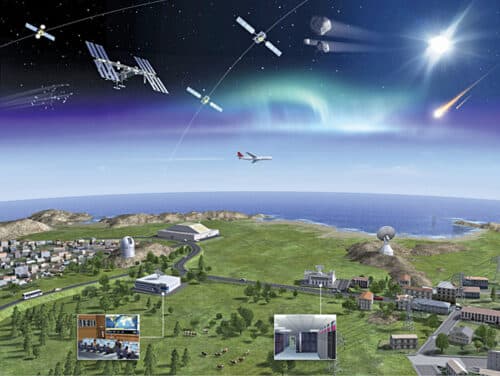
Operating in space domain is highly technology-driven, cost-intensive, and demands financial and organisational capacity. Also, there is the danger of falling into the arms race spiral in space with a wide array of new weapon systems becoming available to the adversaries. To encourage widespread innovation and tapping into the public as well as private sector, academics, and the R&D facilities, the government is making available the required resources, including financial support.
Space situational awareness
Outer space is becoming essential for scientific and economic development as well as for ensuring security of the country. Hence the space regulatory authorities, research institutes, defence agencies, spacecraft operators, launch providers, and space insurance organisations need real-time knowledge and data on the mission-related debris, rocket bodies, fragmentation debris, and functional and non-functional spacecrafts. The space situational awareness (SSA) refers to gathering this knowledge and information of near-space environments and providing data for space traffic management and anticipating collision between the space-based assets and space debris. The SSA aids in providing the preventive measures to evade a ‘first strike’ on space assets.
For tracking the debris and monitoring the active and passive satellites in orbit, the Indian Space Research Organisation (ISRO) had been dependent on the data made available by North America Aerospace Defence Command (NORAD). Not being a NORAD member, ISRO could not access the real-time data, resulting in lack of accuracy, precision, and delay in locating the space debris. ISRO has now set up the Directorate of Space Situational Awareness and Management (SSAM) to enable India’s space programme becoming more sustainable, secured, and independent.
To carry out the activities related to SSAM, the Space Situational Awareness Control Centre (SSACC) has been established in Bengaluru. The other SSA capabilities include a long-range telescope in Leh, a radar in India’s northeast region, and a multi-object tracking radar (MOTR) in Sriharikota. In addition, there are optical-infrared observatories at Bengaluru, Pune, Mt Abu, Nainital, and Hanle.
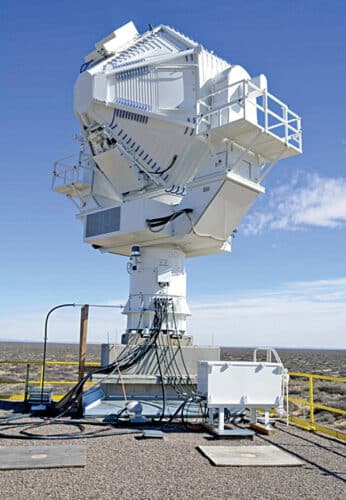
ISRO also collaborates with countries like United States, France, Australia, and Japan for exchange of information and data. ISRO’s Project NETRA (Network for Space Object Tracking and Analysis) tracks satellites in low earth orbits to prevent being hit by space debris or space weather incidents. NETRA will eventually become part of the global system for tracking, warning, and mitigating space debris. Also, several new facilities—including radars, telescopes, data processing centres, and a control centre—to spot, track, and catalogue objects as close as 10cm and as far away as 3400km, are being established.
Role of ISRO and DRDO
ISRO was set up in 1969 for realising the scientific and commercial potential of space, scrupulously avoiding space militarisation. Only in the last few years, ISRO has been collaborating with defence agencies to meet their specific requirements. For example, the current satellite programmes include battlefield communication and cross-border surveillance.
ISRO’s space based assets include a fleet of fifty functional satellites, including communication satellites GSATs and INSATs, surveillance satellites CARTOSAT 2 and RESOURCESAT, and weather monitoring satellites. ISRO’s remote sensing programme (IRS) consists of the largest constellation of remote sensing operational satellites in the world. Eleven operational satellites placed in polar Sun-synchronous orbit provide data in a variety of spatial, spectral, and temporal resolutions for various applications on ground.
The RISAT series of satellites are all-weather earth observation satellites, including synthetic aperture radar satellites RISAT-1 and RISAT-2 that have day and night viewing capabilities. The Indian Regional Navigation Satellite System (IRNSS constellation) is an autonomous regional satellite navigation system that provides accurate real-time positioning and timing services, covering a region extending 1500km around the border.
With the success of the geosynchronous satellite launch vehicle (GSLV-D5), ISRO is ready to take on satellites weighing in excess of two tons, an important prerequisite to the deployment of any weapons system. ISRO launched dedicated military satellites GSAT-6 and GSAT-7A in August 2015 and December 2018, respectively, for providing secure communication for the Armed Forces. In April 2019, ISRO launched EMISAT (Electro-Magnetic Intelligence Satellite) that was jointly developed by ISRO and DRDO to strengthen the capability to intercept enemy radars.
The DRDO, with a network of 52 laboratories, was established in 1958 for developing defence technologies covering various fields, including missiles. Its Integrated Space Cell (ISC), operated jointly by the three services and DRDO, was set up in 2008 as part of programme to develop military space capabilities. Prithvi missiles, a range of short-range ballistic missiles, were developed in the 1980s under the Integrated Guided Missile Development Programme (IGMDP).
The Agni ballistic missiles, a range of MRBMs, IRBMs, and ICBMs developed by DRDO include Agni-V, a long-range deterrence ICBM with a range 6000km. Agni-V can carry multiple independently targetable re-entry vehicle payloads to provide countermeasures against anti-ballistic missile systems. DRDO is also developing an ICBM, codenamed Surya, which is a three-stage missile with solid and liquid fuel as propellant.
In 2006, DRDO unveiled an anti-ballistic missile (ABM) project, which has two ICBMs—the AAD (Advanced Air Defence) and PAD (Prithvi Air Defence) missiles. The AAD missiles are endo-atmospheric interceptors with capability to intercept targets at a height of 30km, whereas PAD missiles are axo-atmospheric interceptors with a dedicated second stage kill vehicle for interception up to an altitude of 80km. Both the missiles mostly have locally developed components.
DRDO has also developed deadly anti-satellite (ASAT) weapons. Agni-V, with the ‘kill vehicle’ using ISRO’s indigenous Satellite Launch Vehicle (SLV) 3’s solid fuel engine and advanced seekers, has the capability to home into hostile satellites. The 15-year ‘Technology Perspective and Roadmap’ prepared in 2010, has a thrust area for development of ASAT weapons for electronic or physical destruction of satellites in low earth orbit as well as higher geosynchronous orbit to protect space assets.
As part of Make in India and Atmanirbhar Bharat initiative, DRDO under Development cum Production Partner (DCPP) programme is committed to handholding of private sector industries to improve their development and production cycle of complex defence systems.
Defence Space Authority and Defence Space Research Agency
The space warfare is not limited to using offensive capabilities in space; it is intrinsically linked with combat on the ground, sea, and air—making it critical for the armed forces to become interoperable with the space force in a conflict situation. Operating in space, unlike in any other domain, involves three dimensions spanning across the globe with no territorial borders. A clearly defined authority functioning as an independent body in the national security architecture is an absolute necessity to achieve the strategic objectives and develop a joint space warfare doctrine.
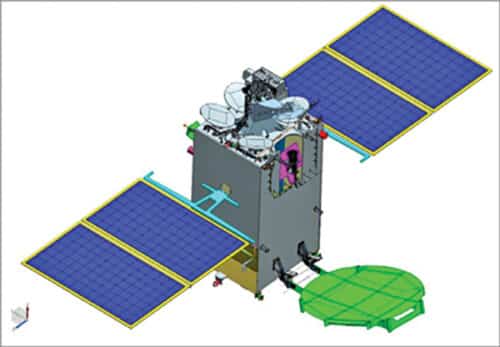
The Naresh Chandra Task Force, set up in July 2011 to review the recommendations of the Kargil Review Committee and assess the implementation progress and further suggest reforms related to national security, recommended the creation of three new tri-service commands—cyber command, aerospace command, and a special operations command. Accordingly, the Defence Space Agency (DSA), the Defence Cyber Agency (DCA), and the Armed Forces Special Operations Division (AFSOD) were set up in September 2018.
DSA, located in Bengaluru, is a tri-service agency working under the Integrated Defence Staff. It is responsible for operating systems to protect India’s interests in outer space and deal with potential space wars as well as develop a space warfare doctrine and strategy. The Defence Imagery Processing and Analysis Centre, Delhi and the Defence Satellite Control Centre, Bhopal were included in the DSA.
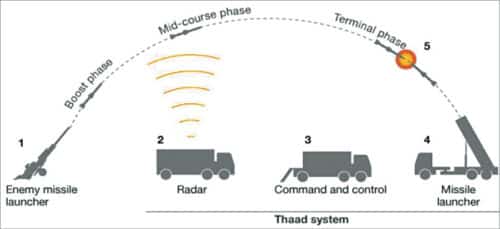
To provide the technical and R&D support, a new agency—the Defence Space Research Agency (DSRO)—was created with the task of developing space warfare weapon systems and technologies to fight wars in space. The DSA is likely to be converted into a full-size tri-service military command in future.
India’s anti-missile defence programme
China demonstrated the capability of its anti-satellite program (ASAT) to target assets in outer space when it successfully destroyed an orbiting satellite by launching a ground based kinetic kill vehicle. China’s growing military might in space had the greatest impact on India’s mindset and necessitated it to build its own capability to respond to any potential threat in space.
DRDO began working on developing a multi-layered and multi-phased missile defence system, like the American anti-ballistic missile defence system Terminal High Altitude Area Defence (THAAD), which has the capability to shoot down short, medium, and intermediate-range ballistic missiles in their terminal phase. Under the DRDO’s development programme, an exo-atmospheric interceptor, Prithvi Defence Vehicle (PDV), has been developed. In 2017, the first real-time interception test Mission Shakti was carried out against a manoeuvring target.
India announced during the 97th Indian Science Congress held in 2009 at the University of Kerala that it was working on operation Mission Shakti to develop the technology to produce a weapon to destroy enemy satellites in orbit. On March 27, 2019 India conducted an anti-satellite missile test. The test required an extremely high degree of precision and technical capability.
The satellite used in the mission as a target was one of India’s existing satellites operating in low orbit. The ASAT weapon was launched at 05:40 UTC (Coordinated Universal Time. IST=UTC+05.30) at the Integrated Test Range (ITR) in Abdul Kalam Island. It hit and destroyed the test satellite at a 283km altitude in low earth orbit after 168 seconds. The test made India the fourth country after the United States, Russia, and China to have tested an ASAT weapon. The test was fully successful and achieved all parameters as per plan.
The interceptor used in the test was a modified PDV Mark-II missile, which had a hit-to-kill capable Kinetic Kill vehicle. The missile, which was a direct-ascent anti-satellite weapon, was 13 metres long with a diameter of 1.4 metres. It was capable of shooting down targets moving at a speed of 10kmps at an altitude of 1200km. Being a three-stage missile, it was fitted with two solid-propellant rocket motor stages and the Kill Vehicle. The combined weight of the first and the second stages was 17.2 tons, with the third stage weighing 1.8 tons.
The first two stages, which carried 16.7 tons of fuel, took the missile to the required height and velocity. After that, the nose tip heat shield was ejected and the IIR (imaging infrared) seeker of the Kill Vehicle locked onto the target satellite. The target was hit with an accuracy of within 10cm, which is comparable with the best reported performance of ASAT missiles.
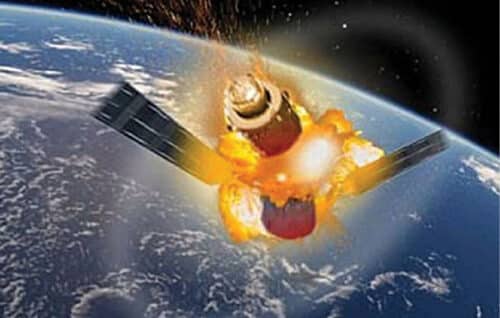
The Kill Vehicle had an advanced terminal guidance system on board, which included a non-gimballed strap-down IIR seeker and an inertial navigation system that used ring-laser gyroscopes. Course corrections to the Kill Vehicle’s trajectory were made using a thrust-vector system. The Kill Vehicle could destroy targets in the entire low Earth orbit region.
DRDO said that it is possible to increase the propulsive power of the interceptor to make it capable of targeting satellites at medium altitudes. To minimise the threat of debris, the interception was performed at an altitude below 300km.
Space debris
The test was conducted at low altitude to ensure that the resulting debris would decay and fall back onto the earth atmosphere within weeks. The impact generated more than 400 pieces of orbital debris. According to an initial assessment of DRDO, some of the debris, depending on size and trajectory, were estimated to re-enter in 45 days.
NASA’s assessment was that the debris could last for years because the solar minimum had contracted the atmosphere that would otherwise cause the debris to re-enter. Jonathan McDowell, an astrophysicist at the Harvard-Smithsonian Centre for Astrophysics, was of the view that most debris should burn up in the atmosphere within weeks, while some might persist for a year. Brian Weeden of Secure World Foundation, however, warned about the possibility of some fragments getting boosted to higher orbits.
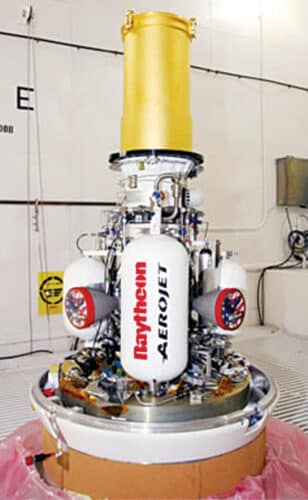
Indian missile experts said that the debris present in a low orbit do not pose a threat to any spacecraft. As of September 26, 2019, there were fifty tracked pieces of debris in orbit, nine of which were lost according to astrodynamics expert T.S. Kelso.
Opportunities opening for the industry
The defence sector has been identified as one of the core areas to boost Atmanirbhar Bharat (self-reliant India) programme, with the vision of a turnover of $25 billion by 2025. Under Atmanirbhar Bharat a positive indigenisation list of 209 items has been prepared with an embargo on import beyond the timeline indicated against them. The government is encouraging foreign strategic partnerships and is bringing about de-licensing, de-regulation, export promotion, and foreign investment liberalisation to ensure ease of doing business.
Ministry of Defence has formulated a draft Defence Production and Export Promotion Policy 2020 (DPEPP) to position India amongst the leading countries of the world in defence and aerospace sectors. Two defence industrial corridors are being set up in Uttar Pradesh and Tamil Nadu with a target investment of $2.85 billion by 2024. The space domain, which was dominated previously by the state-run space organisations, is now co-inhabited with strong collaborative linkages between the private and public sector.
ISRO and DRDO are continuously encouraging private sector to participate in their programmes. For example, launch vehicles are being developed with public-private partnerships; GSLV Mk-III has several components manufactured by private entities. ISRO is implementing a five-step programme in partnership with the private sector for making available the newly developed technologies for commercial use.
Draft Space Activities Bill stipulates a major role for the non-governmental and private sector in space domain. To foster innovation and technology development, MSMEs, start-ups, individual innovators, R&D institutes, and academia are being provided resources, including financial support. A technology development fund has been created under DRDO to promote self-reliance in defence technology.
There is emphasis that the effort should be indigenous and all vertical integration takes place within India with minimal dependence on foreign capabilities throughout the supply chain. To reduce dependency on external sources several initiatives have been implemented by the government. As per the government, public-private partnership (PPP) can spark a revolution in defence production, just like the Green Revolution and White Revolution.
The government has taken many steps which not only fulfil the requirements of the private industry but also create sustainable and long-term linkages with foreign original equipment manufacturers to meet global demands. The private sector needs to leverage opportunities and focus on areas like space, cyberspace, and artificial intelligence to build weapon systems.
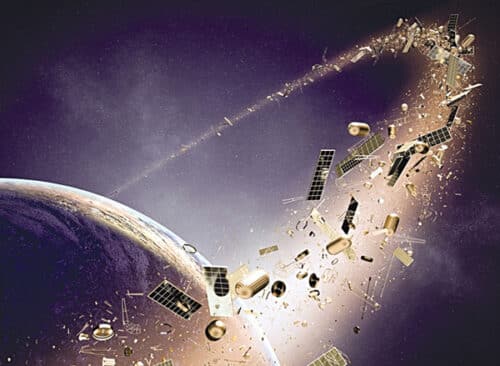
The road ahead
Today, militaries all over the world rely on satellites for command and control, communication, navigation, monitoring early warning and operating space based missile defence systems. Superpower politics and the rising-power dynamics of the 21st century have generated an arms race in space, resulting in a shift from the mere militarisation of space to a trend towards actual weaponisation of space. Countries like the USA, Russia, China, and North Korea have demonstrated nuclear and conventional capability of destroying the adversary’s assets in space.
Even as India continues with a policy of non-weaponisation and peaceful uses of outer space, the growing trend towards weaponisation in neighbourhood and the larger global context are influencing India’s orientation and thinking. It has become necessary to delineate space programme into civilian and military components with clear-cut institutional architecture and better financial allocation.
From its humble origin in the 1960s, India’s space programme has come a long way. Today, the country stands among major world players in satellite launching technology. The private sector has been contributing at a steady pace to meet the increasing demands. Several companies, such as Exseed Space, Pixxel, and Azista, have been providing space assets as well as the ground infrastructure for satellites.
The 2017 Draft Space Activities Bill provides a pathway to cutting out a lot of the bureaucratic red tape. The private sector participation has the potential to boost research and development and innovation while reducing the burden on public spending. This will be particularly significant for an invigorated military space programme to accelerate technology and capability development.
ASAT capabilities demand several technologies related to space based sensors, synthetic aperture radars, electronics, a reliable navigation system, guidance and control, and global positioning systems. Several diverse kinds of sensors—such as infrared sensors, optical sensors, electronic-optical sensors, and magnetic sensors—are important to monitor, detect, and help in sensing the events. If India is able to build this electronics expertise, its global position in terms of anti-missile programme will move up dramatically.







